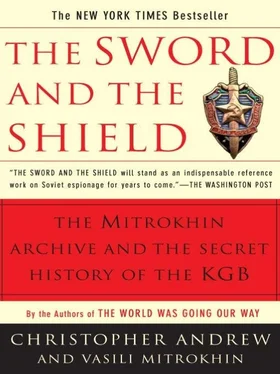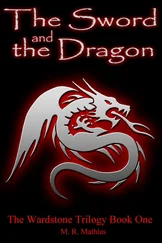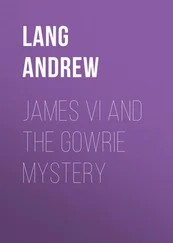Shelton escaped kidnap by the skin of his teeth. He left the reception minutes before a well-drilled assault group of Sandinistas (ten male, three female) stormed Castillo’s mansion at 10:50 p.m. Finding the ambassador gone, they killed his host, held the rest of the guests hostage and demanded that the Archbishop of Managua act as mediator. After several days of tense negotiations, President Somoza released eighteen imprisoned FSLN members, paid a million-dollar ransom for the release of the hostages, agreed to publish a 12,000-word denunciation of himself and US imperialism and provided a plane to fly the Sandinistas to Cuba. 63On the Sandinistas’ arrival at Havana, the Cubans took possession of the million dollars. 64
Though the FSLN had won an enormous propaganda victory, the period of brutal martial law which followed in Nicaragua led to the death of many of its guerrillas and internal conflict among the Sandinistas over how to wage a victorious guerrilla war. 65Still in awe of the Russian revolutionary tradition, 66Fonseca turned to Moscow for advice. On February 14, 1975 he asked the Soviet embassy in Havana to arrange a trip to Moscow for himself and other Sandinistas so that they could study and learn from both Bolshevik experience before the October Revolution and methods of partisan warfare during the Great Patriotic War. He also requested further financial assistance. 67Late in 1975, probably soon after his return from Moscow, 68Fonseca traveled secretly to Nicaragua to try to resolve the factional conflict within the FLSN. On November 8, 1976 he was killed in a shoot-out with a National Guard patrol. After the Sandinista victory in 1979, Fonseca was reburied as a Hero of the Revolution. 69
IN FEBRUARY 1976 the Politburo approved increase staffing and funding for the FCD Illegals Directorate S. As part of the reorganization of the enlarged Directorate by KGB order no. 0046 of April 12, 1976, the former Department V was formally incorporated into it as Department 8 with, by 1980, 23 operational officers at headquarters out of the total for the directorate of 400. 70The head of Department 8, Vladimir Grigoryevich Krasovsky, mournfully reflected on the decline of KGB special actions in recent years. His self-image as a man of action was symbolized by the cigarette lighter mounted on a fragmentation hand grenade which he kept on his desk. But, he complained, “We move paper from place to place. That’s all we do!. 71Department 8’s most basic task—the liquidation of traitors who had fled abroad—was by now an almost hopeless one. But the Centre could not bring itself either to give up the ritual of passing death sentences on KGB defectors or to abandon the pretence that the sentences would one day be carried out.
According to Oleg Kalugin, head of FCD Directorate K (counterintelligence) from 1973 to 1979, the KGB succeeded in tracking down only two post-war defectors, one in Australia (probably Vladimir Petrov) and the other in the United States (probably Pyotr Deryabin)—both of whom had defected in the 1950s. “The hell with them—they’re old men now!” Andropov told Kalugin. “…Find Oleg Lyalin or Yuri Nosenko, and I will sanction the execution of those two!” 72Probably in 1974, Nikolai Fyodorovich Artamonov (codenamed LARK), a former Soviet naval officer working as an analyst in the US Office of Naval Intelligence under the alias “Nicholas Shadrin,” told his KGB controller that he could discover the whereabouts of Nosenko who, he claimed, was living near Washington. 73In 1975 a KGB agent among the Russian Orthodox clergy in the United States found a gangster willing to take out a contract on Nosenko for 100,000 dollars. But before he could do so, the gangster was arrested for other crimes. 74Almost simultaneously, Artamonov was discovered to be a double agent working for the FBI. In December 1975, after being lured to Austria, ostensibly to meet a new controller, he was bundled into a car by operations officers from the Vienna residency who intended to exfiltrate him to Moscow for questioning. The sedative injected into Artamonov to stop him struggling in the back seat was so powerful that it killed him. Kryuchkov, however, was delighted that at last a traitor had received his just deserts. “Which medal do you want?” he asked Kalugin. “The October Revolution or the Combat Red Banner?” Kalugin chose the Red Banner. 75
From 1976 to 1981 the Line KR (counterintelligence) officer E. R. Ponomarev (codenamed KEDROV) was stationed at the Washington residency with the sole task of tracking down defectors and was given the cover post of deputy head of the Consular Department in order to give him a pretext for making enquiries in the Departments of Immigration and Naturalization, as well as in lawyers’ offices. Ponomarev also gained access to the file of purchasers at a Russian-language bookshop and cultivated academics thought likely to come into contact with defectors. 76His five years in Washington appear to have been an expensive waste of time and effort.
Some of the KGB’s Soviet Bloc allies, in particular the Bulgarian Durzhavna Sigurnost (DS), were much less cautious than the Centre in their pursuit of defectors. The zeal with which the DS hunted down traitors who had fled abroad owed much to the personal outrage with which the Bulgarian dictator, Todor Zhivkov, the most colorful and grotesque of the rulers of eastern Europe, responded to émigré criticism and mockery. The best known of the émigré writers, Georgi Markov, broadcast regular commentaries on the corruption and excesses of the Zhivkov regime in the Bulgarian-language services of the BBC World Service and Radio Free Europe, ridiculing Zhivkov himself as a man with a “a distastefully mediocre sense of humor,” the bullying manner of “a village policeman,” a penchant for “pompous phrases” and the deluded conviction that he was a great huntsman.
In 1974 Boris Arsov, another of the defectors who had dared to attack the excesses of the Zhivkov regime, suddenly disappeared from his flat in Aarhus, Denmark, where he had been publishing the Bulgarian émigré newspaper Levski. Two months later he resurfaced in Sofia and was sentenced to fifteen years’ imprisonment. An official statement during Arsov’s trial virtually admitted that he had been kidnapped by the DS:
Arsov was playing with fire. The timely activity of the State Security stopped his dangerous activity. This only shows that the hand of justice is longer than the legs of the traitor.
In 1975 Arsov was officially declared to have been found dead in his prison cell. At about the same time three Bulgarian exiles who had been helping others to defect—Ivan Kolev, Peter Nezamov and Vesselina Stoyova—were shot in Vienna. The assassin, quickly identified by the Austrian police, was a DS agent who had penetrated the émigré group and escaped to Sofia after the murders. 77
The KGB eventually became embroiled in DS special political actions. Early in 1978 General Dimitar Stoyanov, Bulgarian interior minister and head of the DS, appealed to the Centre for help in liquidating Georgi Markov, then living in London and accused of “slandering Comrade Zhivkov” in his many radio broadcasts. The request was considered at a meeting chaired by Andropov and attended by Kryuchkov, Vice Admiral Mikhail Usatov (Kryuchkov’s deputy) and Oleg Kalugin, head of FCD counterintelligence. Though reluctant to take the risks involved in helping the Bulgarians, Andropov eventually accepted Kryuchkov’s argument that to refuse would be an unacceptable slight to Zhivkov. “But,” he insisted, “there is to be no direct participation on our part. Give the Bulgarians whatever they need, show them how to use it and send someone to Sofia to train their people. But that’s all.”
The Centre made available to the DS the resources of its top secret poisons laboratory, the successor to the Kamera of the Stalinist era, attached to the OTU (Operational Technical) Directorate and under the direct control of the KGB chairman. Sergei Mikhailovich Golubev, head of FCD security and a poisons specialist, was put in charge of liaison with the Bulgarians. The murder weapon eventually chosen was concealed in an American umbrella, one of a number purchased at Golubev’s request by the Washington residency in order to disguise the KGB connection if the weapon was ever discovered. The tip was converted by OTU technicians into a silenced gun capable of firing a tiny pellet containing a lethal dose of ricin, a highly toxic poison made from castor-oil seeds. On September 7, 1978, while Markov was waiting at a bus stop on Waterloo Bridge, he felt a sudden sting in his right thigh. Turning instinctively, he saw a man behind him who had dropped his umbrella. The stranger apologized, picked up his umbrella and got into a taxi waiting nearby. Though Markov felt no immediate ill effects, he became seriously ill next day and died in hospital on September 11. During the autopsy a tiny pellet was recovered from Markov’s thigh, but the ricin, as Golubev had calculated, had decomposed. Markov’s assassination alerted another Bulgarian émigré, Vladimir Kostov, to the significance of an earlier, unexplained attack he had been subject to in Paris on August 26. Nearly a month later, on September 25, a steel pellet of the kind that had killed Markov was removed, still intact, from Kostov’s back. During a visit to Sofia soon afterwards, Kalugin was presented by General Stoyanov with an expensive Browning hunting rifle in gratitude for KGB assistance in the murder of Markov. 78
Читать дальше











